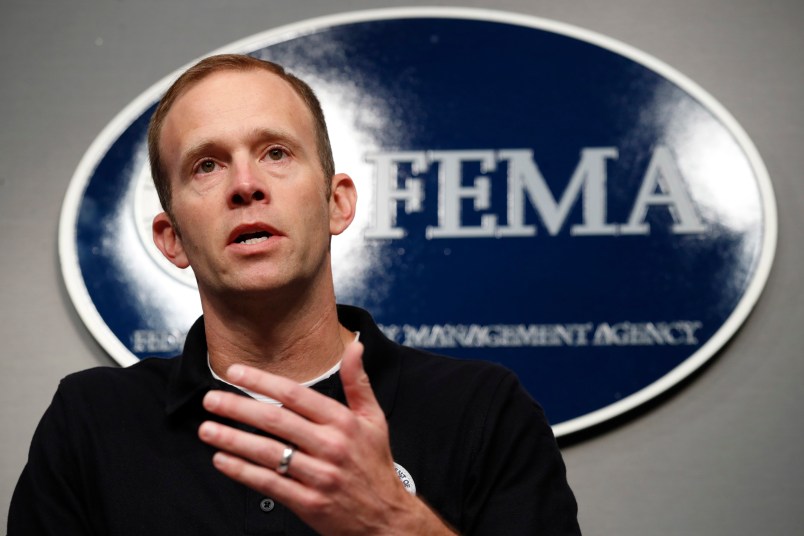Brock Long, the administrator of the Federal Emergency Management Agency, on Sunday said Hurricane Irma is a “worst case scenario” for the parts of Florida in the storm’s path.
“This is a worst case scenario for Monroe County, Florida Keys and the west coast of Florida,” Long said on “Fox News Sunday.”
He said areas in the “northeast quadrant” are “where the maximum radius winds are, that define the intensity of the storm, that’s where storm surge is most prevalent.”
“Storm surge has the highest potential to kill the highest amount of people and cause the most amount of damage,” Long said. “If the water starts to rise around you and you become isolated, try to get into a facility that you think can withstand the winds and get elevated. Get out of the storm surge.”







Okay, I don’t mean to be flippant here, but what is it with the baseball caps in a national emergency? Is that the sign of seriousness? And how utterly repulsive is Rick Scott. I know, the bar is very high for an answer to that question.
I’m afraid this falls into the “No shit, Sherlock” category of observations. It is, however, almost refreshing in a Republican administration to have a FEMA director who is able to recognize the obvious. It is at least a change from the usual “The hurricane is a hoax perpetrated by the liberal media and the scientists. Nothing to be afraid of.”
I think it has become clear that God has decided subtly is wasted on us in regard to Global Climate Change and has pulled out the big guns…
And for all you Leviticus fans out there:
“The land shall not be sold in perpetuity, for the land is mine; with me you are but aliens and tenants. Throughout the land that you hold, you shall provide for the redemption of the land.” Leviticus 25:23-24
Well, either that, or someone somewhere baked a wedding cake for a gay wedding. It’s hard to decide.
The Republican position on climate change reminds me of an oncologist who encourages his patients to smoke, preferring to treat them afterwards, when they have advanced lung cancer. At which point little to nothing could be done beyond the palliative. A physician like that would/should lose his license.